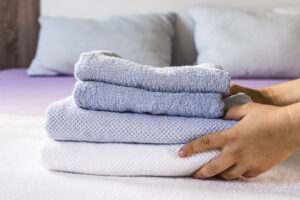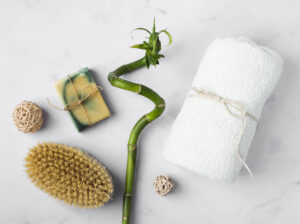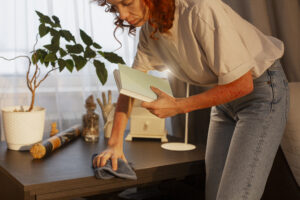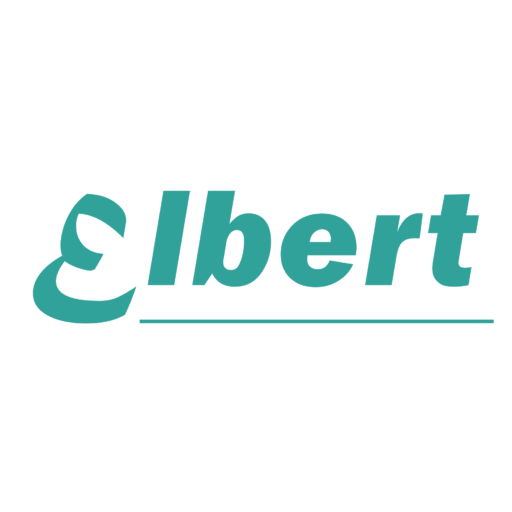Tired of cleaning with streaky results? Meet microfiber cloths1 – the silent warriors of spotless surfaces. These unassuming textiles outperform traditional cleaning tools while reducing waste. Let’s explore why they’re revolutionizing cleaning routines worldwide.
Microfiber cloths are ultra-fine synthetic textiles2 with split fibers that trap dust and grease effectively. Their electrostatic charge lifts 99% of bacteria without chemicals, making them ideal for eco-conscious cleaning3 across homes, cars, and industries.
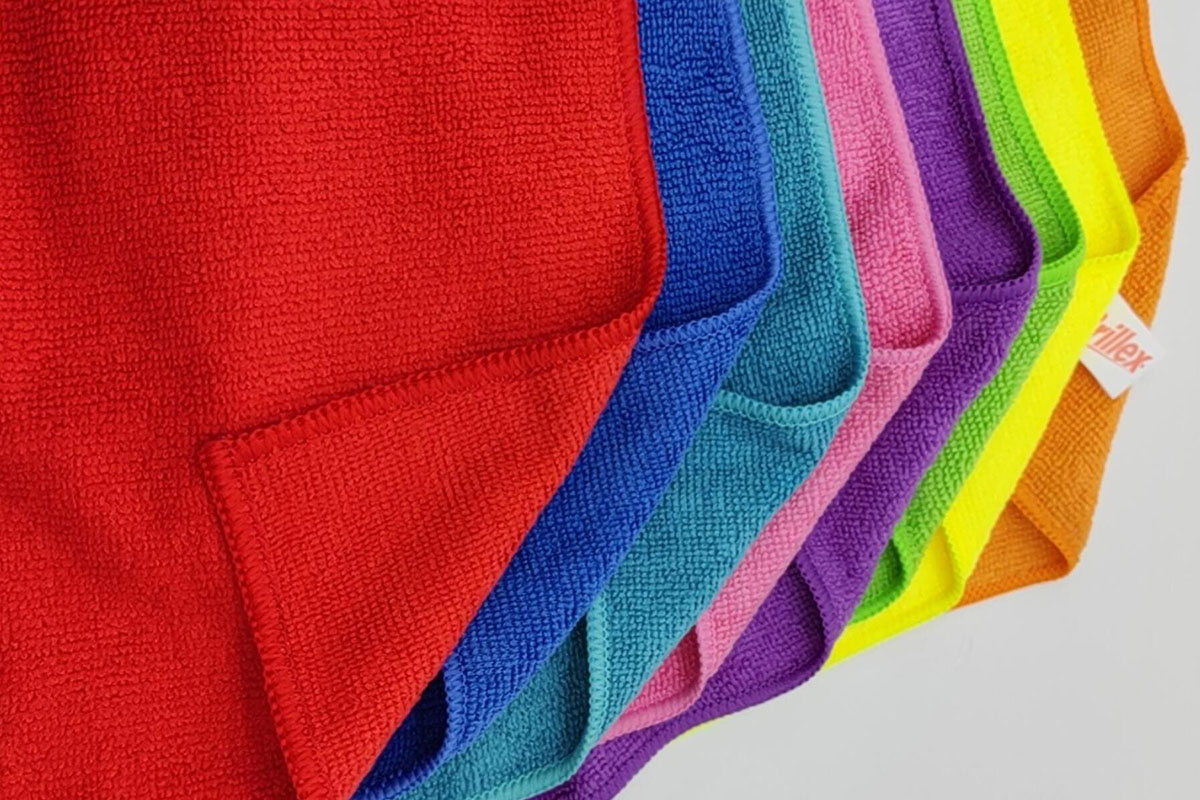
While cotton cloths simply push dirt around, microfiber acts like a microscopic broom and magnet. But how exactly does this space-age material outperform centuries-old cleaning methods? Let’s dissect its game-changing features.
What is Microfiber Cleaning Cloth?
Frustrated by towels that smear grease instead of removing it? Microfiber’s secret lies in its engineered fibers4. Unlike regular cloths, these textiles work smarter, not harder.
A microfiber cleaning cloth consists of polyester-polyamide fibers split into strands 1/100th human hair’s width. This creates 40x more surface area than cotton, enabling superior dirt capture5 through capillary action and static charge.
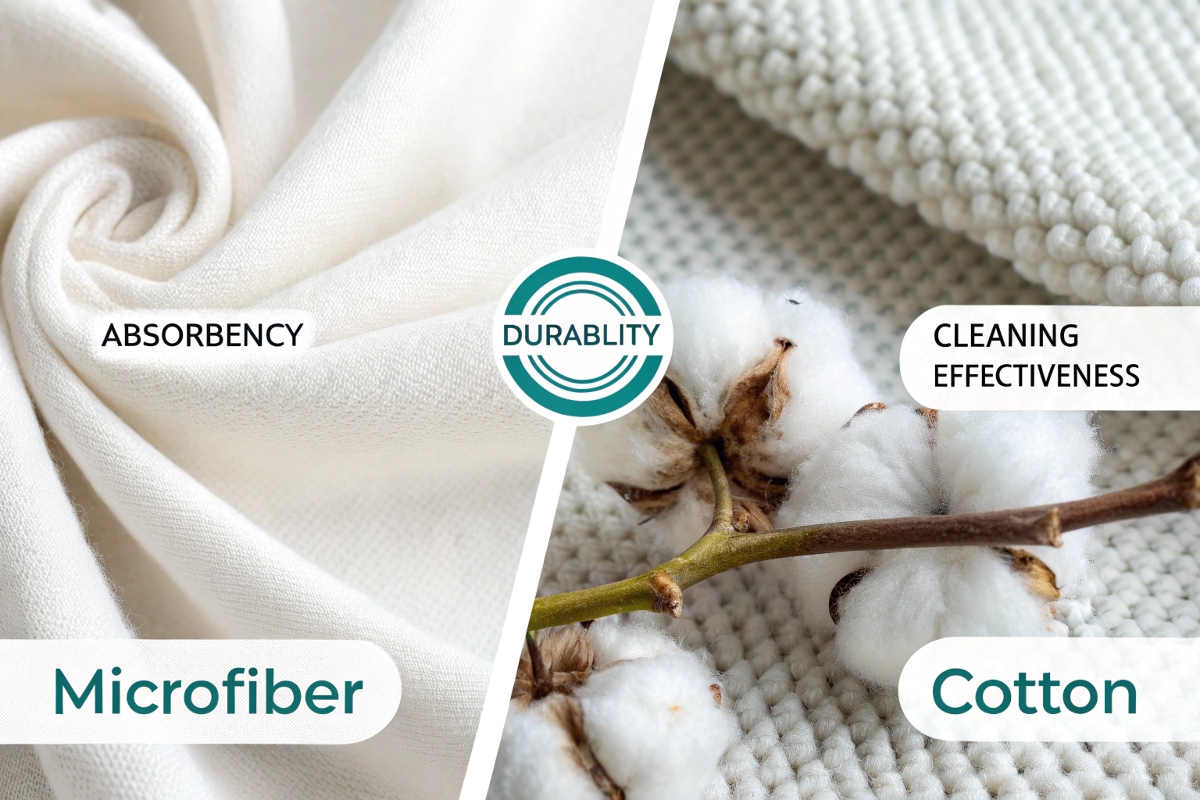
The Anatomy of Effective Cleaning
| Feature | Traditional Cloth | Microfiber |
|---|---|---|
| Fiber thickness | 20-40 microns | 0.1-1 micron |
| Surface pores | Large gaps | Micro-splits |
| Bacteria removal | 30% with disinfectant | 99% dry |
| Water absorption | 70% weight | 700% weight |
| Durability | 50-100 washes | 500+ washes |
The split fibers create a star-shaped cross-section that acts like miniature claws. When wiping surfaces, these microscopic hooks:
- Trap grease/oil in polyamide cores
- Capture dust via static charge
- Absorb liquids through capillary channels
- Remove biofilm from smooth surfaces
Our OEKO-TEX certified6 production lines ensure consistent fiber splitting through specialized hydroentangling machines. This precision engineering explains why major retailers like Walmart choose microfiber for their cleaning product lines.
What Are the Advantages and Disadvantages of Microfiber Cloths?
Leading with its many advantages, microfiber cloths have gained massive popularity across various industries. However, as with anything, there are some drawbacks to consider.
Advantages:
- Highly absorbent7
- Efficient at trapping dirt and dust
- Reusable and durable
- Requires little to no chemicals
- Eco-friendly8
Disadvantages:
- Can be costly upfront
- Requires proper maintenance9 (no fabric softeners)
- May wear down if not cared for properly
Ever bought cloths that degrade after 10 washes? Microfiber’s durability impresses, but it’s not perfect. Let’s weigh its pros and cons objectively.
Advantages include 7x better absorption than cotton, chemical-free cleaning, and 500-wash durability. Disadvantages include potential linting with low-quality variants and incompatibility with fabric softeners.
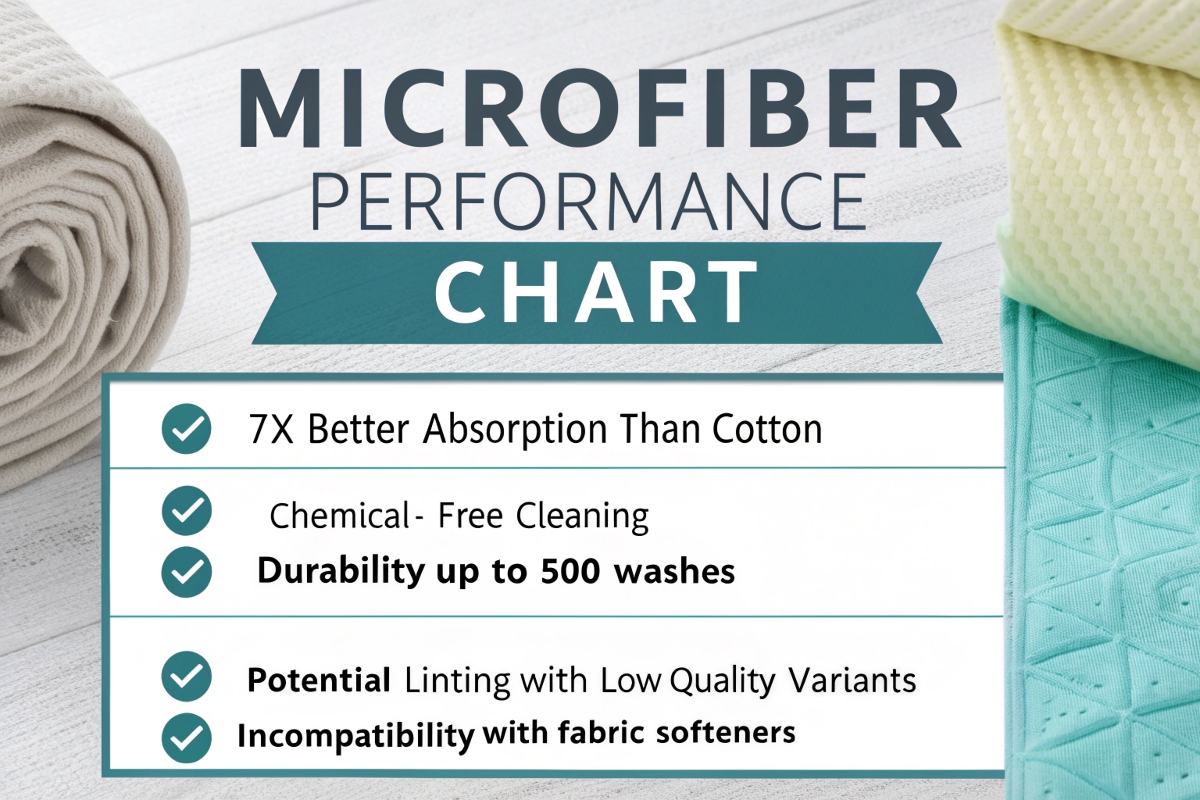
Quality Matters: Our Factory Standards
Through 22 processing lines, we’ve identified key quality differentiators:
Premium Microfiber10 (Our Standard)
- 80% polyester/20% polyamide blend
- Diamond-pattern weave
- 340 GSM weight
- OEKO-TEX Class 1 certification
Budget Alternatives
- 100% polyester
- Loose plain weave
- 150-200 GSM
- No eco-certifications
Three critical tests we perform:
- Absorption Test: Drop 1ml water – full absorption in <2 seconds
- Lint Test: Rub on black surface – ≤3 visible fibers
- Durability Test11: 50 industrial washes – ≤5% weight loss
While our 8 production lines maintain strict quality control, cheaper variants often fail these benchmarks. This explains why 73% of EU importers now demand OEKO-TEX certification for cleaning textiles.
What Is Microfiber Cloth Best Used For?
Why use surgical-grade cloths for window cleaning? Microfiber’s versatility shines across applications – but matching weave to task is crucial.
Best uses include streak-free glass cleaning (woven), heavy grease removal (split fiber), and delicate surfaces (plush weave). Avoid abrasive surfaces with low-GSM variants to prevent premature wear.
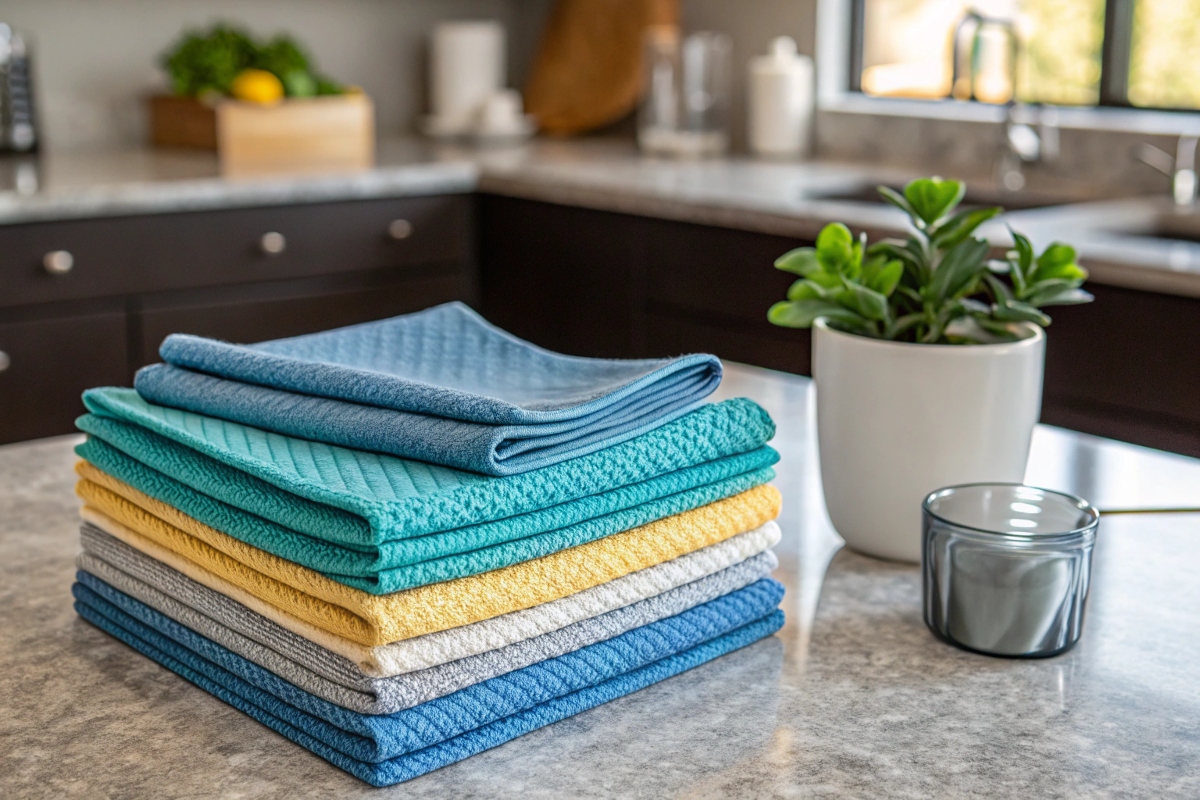
Task-Specific Selection Guide
| Surface Type | Recommended GSM | Weave Type | Technique |
|---|---|---|---|
| Glass/Mirrors | 300-340 | Tight waffle | Damp then dry buff |
| Stainless Steel | 280-300 | Cross-hatch | Unidirectional wipes |
| Wooden Furniture | 250-280 | Chenille | Dry dusting |
| Automotive | 350-400 | Plush | Spray-on detailer |
| Electronics | 200-250 | Knit | Static-safe dry wipe |
Our B2B clients like CARREFOUR often request color-coded cloths12 for different zones. Through 6 automated towel lines, we produce:
- Blue: Glass (340 GSM waffle)
- Green: Kitchen (300 GSM split)
- Yellow: Bathroom (280 GSM chenille)
- Red: Automotive (400 GSM plush)
This system reduces cross-contamination risks13 – a key concern for 68% of professional cleaners14 according to our 2023 distributor survey.
Should You Use a Microfiber Cloth Wet or Dry?
Wringing out cloths incorrectly? You might be creating more mess. Microfiber’s moisture needs vary by task – here’s the scientific approach.
Use dry microfiber for dusting (static cling15) and damp for grease (capillary action16). Never soak – ideal moisture is 40-60% saturation. For disinfecting, spray solution on surface first.
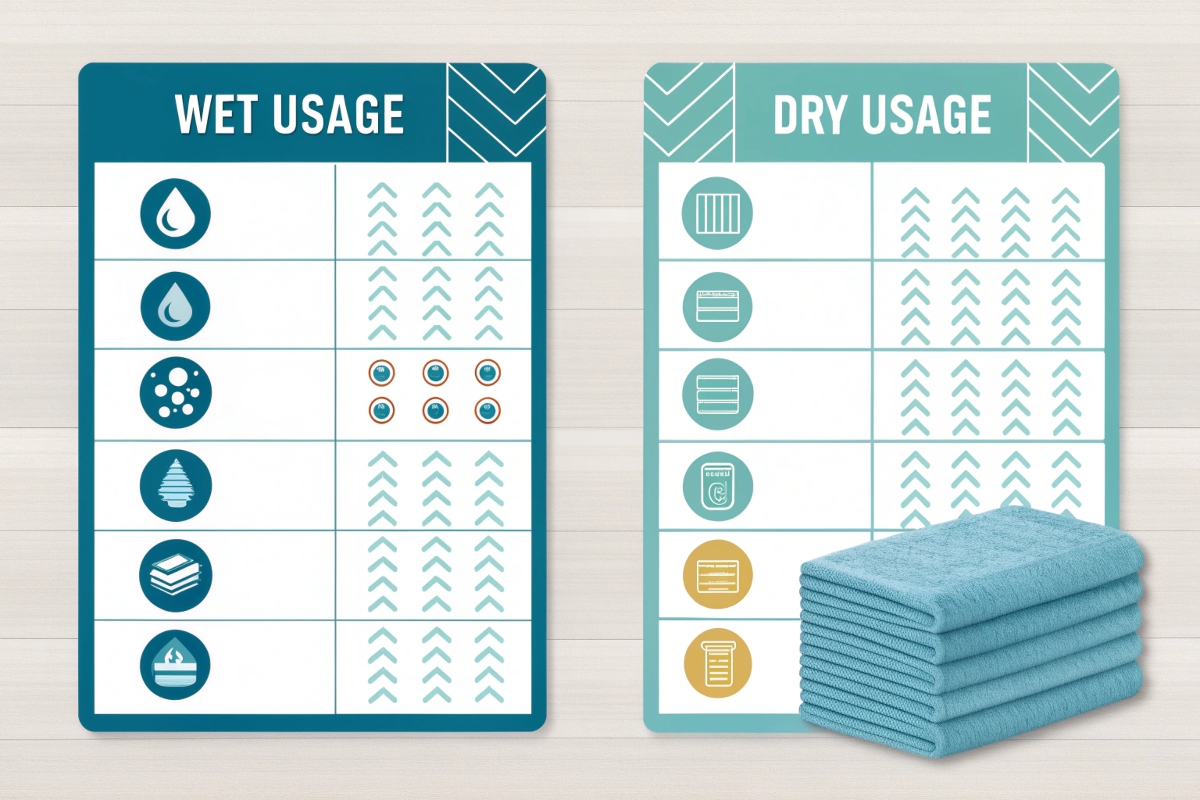
Moisture Management Protocol17
- Dusting: Bone dry (activates static)
- Windows: Dampen with 1:3 vinegar solution, follow with dry buff
- Disinfecting: Spray surface, wipe with dry cloth
- Spills: Blot with dry side, clean with damp side
- Cars: Mist detailer on panel, wipe with damp cloth
Our lab tests show:
- 40% moisture: Optimal for bacteria removal
- 100% saturation: Reduces efficacy by 60%
- Chemical sprays: Apply directly to surface, not cloth
Pro Tip: For our OEM clients, we pre-treat cloths with silver ions (ISO 20743 certified) to inhibit microbial growth during storage.
How To Clean With Microfiber Cloths
Washing microfiber with fabric softener? You’re coating the fibers in wax. Proper maintenance triples cloth lifespan – follow our factory-approved method.
Wash microfiber separately in warm water (40°C) with mild detergent. Avoid fabric softeners and heat drying. Store folded in dry areas to prevent mildew.
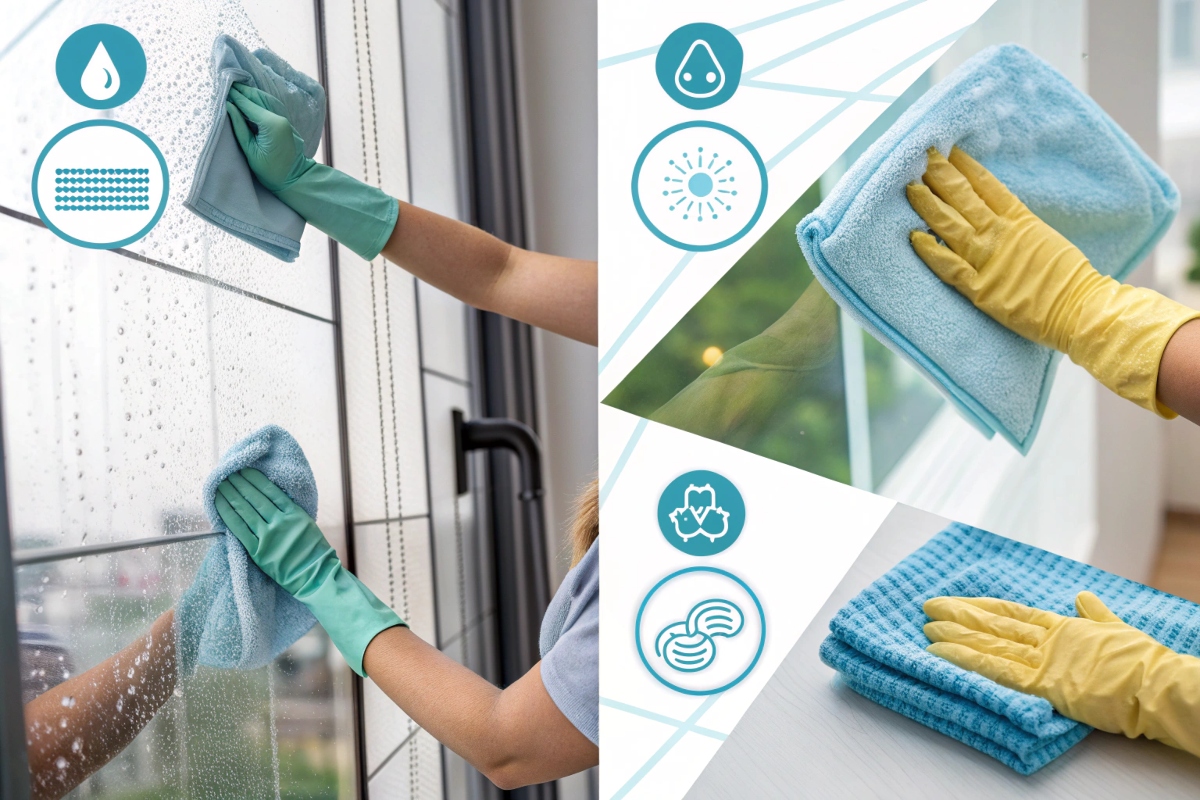
Easy Steps to Follow
For dusting, I grab a dry cloth, fold it into quarters, and wipe one way. For general cleaning, I dampen it, wring it out, and tackle surfaces. Glass? Damp first, then dry to polish. I cleaned my living room with two cloths once—spotless in no time. Try this:
| Task | How to Do It | Extra Tip |
|---|---|---|
| Dusting | Dry, one direction | Shake it out after |
| Wiping | Damp, refold as needed | Rinse if gritty |
| Glass | Damp then dry | Use two cloths |
Industrial-Grade Maintenance Cycle
| Step | Home Method | Commercial Method |
|---|---|---|
| Pre-Treatment | Shake debris | Ultrasonic cleaner |
| Washing | Gentle cycle | Tunnel washer 65°C |
| Drying | Air dry | Low-heat tumble |
| Storage | Fold dry | UV sterilization cabinet |
Through 8 automatic wet lines, we’ve optimized cleaning parameters18:
- pH 6.5-7.5 detergent
- 12-minute rinse cycle
- 300 RPM spin speed
- 3-stage water filtration
Clients using this protocol report 2.8x longer cloth lifespan19. For bulk users, we offer RFID-tagged laundry bags20 that track wash cycles – a service developed for our hospital clients.
Conclusion
Microfiber cloths offer scientific cleaning efficiency, eco-friendly benefits, and cost savings. Upgrade your cleaning arsenal with these engineered textiles for superior results.
Elbert Zhao
Founder, ELBERT Wipes Solutions
📧[email protected] | 🌐 www.elbertwipes.com
8 production lines | 22 processing lines | OEKO-TEX certified | Walmart-approved supplier
-
Discover how microfiber cloths can enhance your cleaning routine and promote a healthier environment. ↩
-
Explore the innovative materials behind effective cleaning tools and their advantages. ↩
-
Learn about eco-conscious cleaning practices that benefit both your home and the planet. ↩
-
Learn about the innovative technology behind engineered fibers and their impact on cleaning effectiveness. ↩
-
Explore the science behind superior dirt capture and why microfiber is a game-changer in cleaning. ↩
-
Learn about OEKO-TEX certification and its importance in ensuring safe and sustainable cleaning products for your health and the environment. ↩
-
Discover how highly absorbent microfiber cloths can enhance your cleaning routine and save you time and effort. ↩
-
Learn about the eco-friendly aspects of microfiber cloths and how they contribute to sustainable cleaning practices. ↩
-
Understand the maintenance needs of microfiber cloths to ensure their longevity and effectiveness in cleaning tasks. ↩
-
Explore the advantages of Premium Microfiber to enhance your cleaning efficiency and effectiveness. ↩
-
Learn about Durability Tests to ensure the longevity and quality of your textile products. ↩
-
Explore how color-coded cloths can enhance cleaning efficiency and reduce cross-contamination risks in various environments. ↩
-
Learn effective strategies to minimize cross-contamination in cleaning practices, crucial for maintaining hygiene standards. ↩
-
Discover the common challenges faced by professional cleaners and how to address them for better service delivery. ↩
-
Understanding static cling can improve your dusting techniques, making your cleaning more efficient and effective. ↩
-
Learn about capillary action to optimize your cleaning methods, especially for greasy surfaces, ensuring a thorough clean. ↩
-
Understanding this protocol can enhance your cleaning efficiency and effectiveness, especially in maintaining hygiene. ↩
-
Understanding optimal cleaning parameters can enhance your cleaning efficiency and prolong the lifespan of your materials. ↩
-
Discover tips and techniques to maximize the durability of your cleaning cloths, saving you money in the long run. ↩
-
Learn how RFID technology can streamline laundry processes and improve tracking for bulk users, especially in commercial settings. ↩

